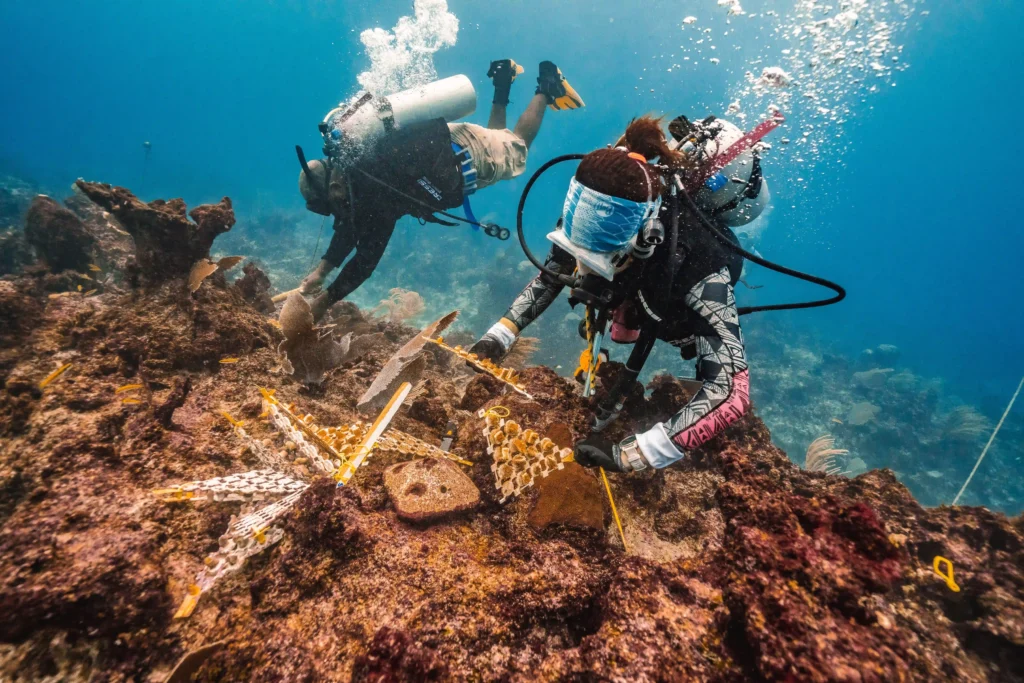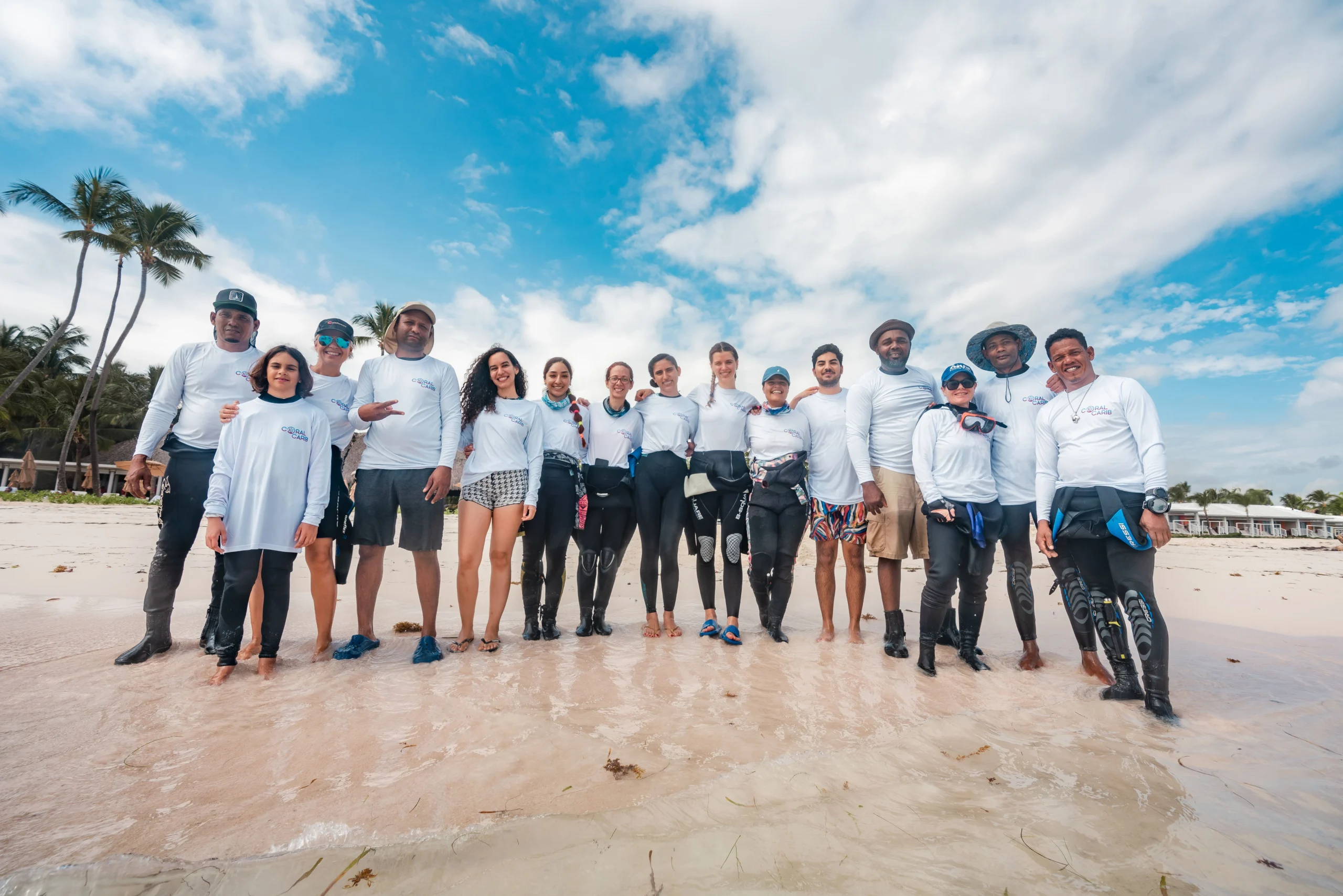Coral reefs are among the most diverse ecosystems on Earth, providing habitat and refuge for over a quarter of marine species. They are key to coastal communities’ development, particularly in the Dominican Republic, where they underpin the thriving tourism industry, especially on the East Coast, where Arrecifes del Sureste Marine Sanctuary (SAMAR) is located. CoralCarib aims to establish a science-driven path toward coral reef resilience while generating economic benefits for local communities. In 2023, the world witnessed the fourth and most severe mass coral bleaching event on record, significantly impacting reefs in the Caribbean. This exacerbated the ongoing degradation of reefs produced by disease outbreaks for decades. This scenario demands scientists to accelerate current restoration efforts.
The CoralCarib project aims to accelerate effective management and coral reef restoration in four Central Caribbean countries—Cuba, the Dominican Republic, Haiti, and Jamaica. Funded by the International Climate Initiative (IKI), this six-year project officially began in 2023 with the mission of conserving and restoring reefs at climate refugia sites to improve coastal resilience and the livelihoods of millions of people.
In the Dominican Republic, CoralCarib focuses on the SAMAR. The Nature Conservancy (TNC) leads the initiative alongside the Dominican Foundation for Marine Studies (FUNDEMAR) in Bayahíbe and the Puntacana Foundation (FPC) in Punta Cana. The project focuses on four significant outputs: (1) improved management and conservation of reefs at climate refugia sites, (2) improved sustainable livelihoods, (3) more resilient coastal communities to climate change and (4) enabling policy framework to preserve coral reefs.
As part of Output 1, two massive restoration activities took place in late 2024, implementing various techniques and involving 29 local youth in conservation work. In Punta Cana, the Puntacana Foundation applied microfragmentation, an asexual reproduction technique, transplanting 2,800 microfragments from eight coral species in priority areas. These microfragments were produced at its Marine Innovation Center (CIM), ensuring the sustainability of the restoration process. In Bayahibe, FUNDEMAR focused on massively producing assisted-sexual coral recruits, cultivated in their land-based facility and in Coral-Rearing In-situ Basins (CRIBs) designed by SECORE International. Despite registered lower fecundity most likely associated to the bleaching event, 6,030 substrates with approximately 293,760 recruits from three species: Diploria labyrinthiformis, Acropora palmata and Dendrogyra cylindrus were outplanted in degraded reefs and coral nurseries.

Coral restoration in the DR will experience a giant leap in 2025. The opening of the “Marine Innovation Hub Dominican Republic,” a project supported by Oceankind Foundation and TNC California, and TNC Caribbean, will bring together FPC and FUNDEMAR. This hub aims to become a regional reference in coral restoration. The goal is to incorporate advanced technologies, including robotics, artificial intelligence (AI), and molecular biology to coral conservation and restoration. Additionally, it will develop best-practice guidelines for leveraging these technologies to protect coastal marine ecosystems.
CoralCarib sets a new coral reef restoration standard by combining cutting-edge science with community engagement. Through its collaborative efforts, the project seeks to ensure the long-term survival of these critical ecosystems while fostering economic opportunities for local communities.
Further Reading: https://www.nature.org/content/dam/tnc/nature/en/documents/CoralCaribfactsheet.pdf
The views expressed in these articles are for information only and do not represent the official position of the Caribbean Biodiversity Fund or its partners.





